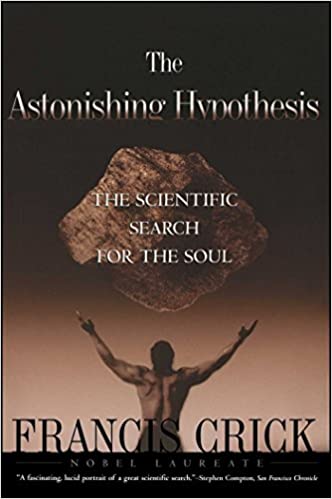He is thinking of Francis Crick (1916–2004) and his famous astonishing hypothesis: “You are nothing but a pack of neurons.” As in The Astonishing Hypothesis: The Scientific Search for Soul.

Michael Egnor thinks that while physicist Alan Sokal hoaxed postmodern journals (the famous Sokal hoax. of 1996), materialists like Francis Crick (1916–2004) seem to hoax themselves:
Philosopher Ludwig Wittgenstein saw that much materialist neuroscience was neither true, nor false, just nonsense.
Wittgenstein was a philosopher of mind — in my view, the most profound since Aquinas. He was harshly critical of the suffocating layers of nonsense that choke modern neuroscience. One example is the mereological fallacy, which is the fallacy of attributing to parts of a thing what can only be attributed to the whole.
For example, it is metaphorical but not really true that my eyes see or my mouth speaks or my legs run. To assert that body parts see or speak or run makes no sense. I see, I speak, I run, using my eyes, mouth, and legs. Wittgenstein believed that the mereological fallacy is at the root of many deep misconceptions in modern neuroscience: he noted that “Only of a living human being… can one say ‘it has sensations; it sees, is blind; hears, is deaf; is conscious or unconscious.’ (Philosophical Investigations, p. 281).”
Michael Egnor, “How much of neuroscience is an unwitting hoax?” at Mind Matters News
You may also wish to look at this article by Michael Egnor: Contradictory, illogical beliefs are a feature, not a bug, of Critical Theory. As a historian of totalitarianism has pointed out, “The aim of totalitarian education has never been to instill convictions but to destroy the capacity to form any.” Critical theory “education” extinguishes the capacity for rational thought and leaves students without the mental tools to evaluate sense vs. nonsense.